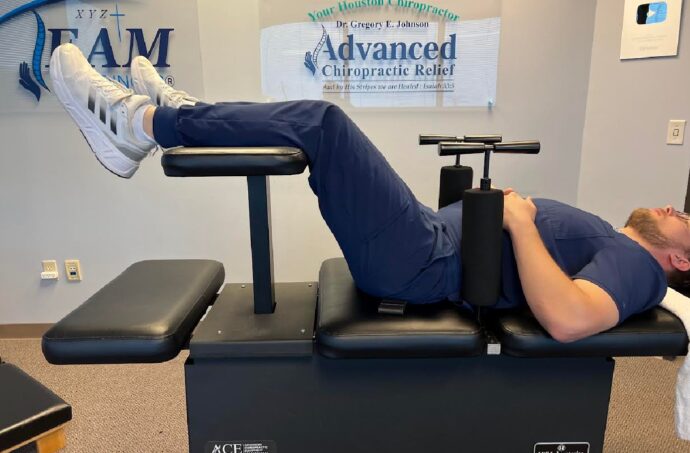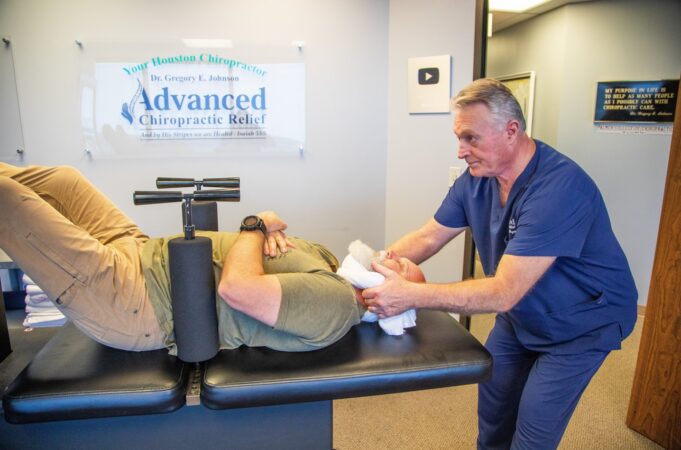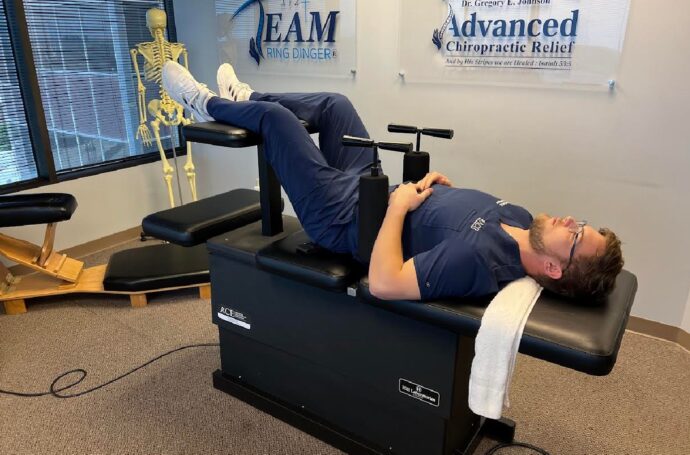Spinal adjustments have long been recognized as an effective treatment for various musculoskeletal conditions. Chiropractic care, in particular, has gained popularity as a non-invasive and drug-free approach to addressing spinal issues. Within the realm of chiropractic adjustments, two prominent techniques have emerged: the Ring Dinger® and traditional chiropractic adjustments. While both aim to restore proper alignment and function to the spine, they differ in their methods and outcomes. In this blog post, we will delve into the details of these techniques, their benefits, drawbacks, and help you make an informed decision about which approach is best suited for your spinal health.
Understanding the Ring Dinger® technique: Benefits and principles
The Ring Dinger® technique, also known as the non-surgical spinal decompression, is a specialized method developed by Dr. Gregory Johnson. This technique involves the use of a specially designed table that allows for controlled traction and decompression of the spine. By applying gentle and precise force, the Ring Dinger® aims to relieve pressure on the spinal discs, reduce nerve impingement, and restore proper alignment. Advocates of this technique claim that it can effectively alleviate pain, improve range of motion, and enhance overall spinal health.
Exploring traditional chiropractic adjustments: Techniques and effectiveness
Traditional chiropractic adjustments encompass a wide range of techniques performed by chiropractors worldwide. These methods typically involve manual manipulation of the spine, utilizing various techniques such as spinal mobilization, diversified adjustments, and Gonstead technique. Traditional adjustments aim to correct misalignments, improve joint function, and reduce pain by manually applying controlled force to specific areas of the spine. Many individuals have experienced positive outcomes with traditional chiropractic adjustments, reporting reduced pain, increased mobility, and improved overall well-being.
Differentiating between the Ring Dinger® and traditional adjustments
This technique and traditional chiropractic adjustments are distinct in their approaches to spinal manipulation and the outcomes they aim to achieve.
Technique
The Ring Dinger® technique utilizes a specialized table to provide controlled traction and decompression of the spine. It focuses on relieving pressure on the spinal discs, reducing nerve impingement, and restoring alignment. This technique is associated with a unique popping sound and is often used for conditions like herniated discs and sciatica. It offers immediate pain relief and improved mobility, but some individuals may find the pulling sensation uncomfortable.
Traditional Chiropractic Adjustments:
Traditional adjustments involve manual manipulation of the spine by a chiropractor using their hands. Techniques such as spinal mobilization, diversified adjustments, and the Gonstead technique are employed. Traditional adjustments can be tailored to specific areas of the spine and aim to correct misalignments, improve joint function, and reduce pain. They are generally well-tolerated and offer versatility in addressing a range of spinal conditions.
Factors to consider when choosing a chiropractic technique
When deciding between the Ring Dinger® and traditional chiropractic adjustments, several factors should be taken into account. Firstly, consider the specific condition or symptoms you are experiencing. Certain spinal issues may respond better to one technique over the other. Additionally, assess your comfort level with the different methods. Some individuals may prefer the gentle traction of the Ring Dinger®, while others may find traditional adaptation more familiar and comforting. Lastly, consult with a qualified chiropractor who can evaluate your unique needs and provide expert guidance on the most suitable approach for your spinal health.
Pros and cons of the Ring Dinger® method
The Ring Dinger® technique offers several potential benefits. It can provide immediate relief from pain and discomfort, particularly for individuals with herniated discs or sciatica. The controlled traction used in this technique may also lead to improved mobility, increased circulation, and reduced inflammation. However, some individuals may find the pulling sensation uncomfortable or experience soreness afterward. Furthermore, the Ring Dinger® may not be suitable for everyone, such as those with certain spinal conditions or individuals who prefer a more hands-on approach.
Pros and cons of traditional chiropractic adjustments

improved functionality. However, the manual nature of these adjustments may cause mild soreness or stiffness in some cases. It’s also crucial to choose a skilled and experienced chiropractor who can perform these techniques safely and effectively.
Comparing the safety and potential risks of each technique
Both adjustments are considered safe when performed by trained professionals. However, as with any medical procedure, there are risks to consider. The Ring Dinger® technique, if performed improperly or on individuals with contraindications, may lead to muscle strains, ligament sprains, or exacerbation of existing spinal conditions. Traditional chiropractic adjustments, if administered with excessive force or inappropriately, may result in temporary discomfort, soreness, or rare instances of more serious complications. It’s crucial to communicate openly with your chiropractor, disclose any pre-existing conditions, and follow their guidance for a safe and effective treatment.
Patient preferences and individual needs in selecting the right method
Ultimately, the decision between the Ring Dinger® and traditional chiropractic adjustments rests on patient preferences and individual needs. Some individuals may find the gentle traction and decompression of the technique more appealing, while others may prefer the hands-on approach and versatility of traditional adjustments. Consulting with a reputable chiropractor who can assess your condition, listen to your concerns, and provide personalized recommendations is crucial in making the right choice for your spinal health.
Conclusion: Making an informed decision for optimal spinal health
Whether you opt for the Ring Dinger® or traditional chiropractic adjustments, both techniques offer potential benefits for spinal health. Understanding the differences, considering individual preferences, and seeking guidance from a qualified chiropractor will help you make an informed decision. Remember that each individual’s spinal condition is unique, and what works for one person may not be the best option for another. By taking these factors into account, you can embark on a path toward optimal spinal health and well-being, ultimately improving your overall quality of life.
















